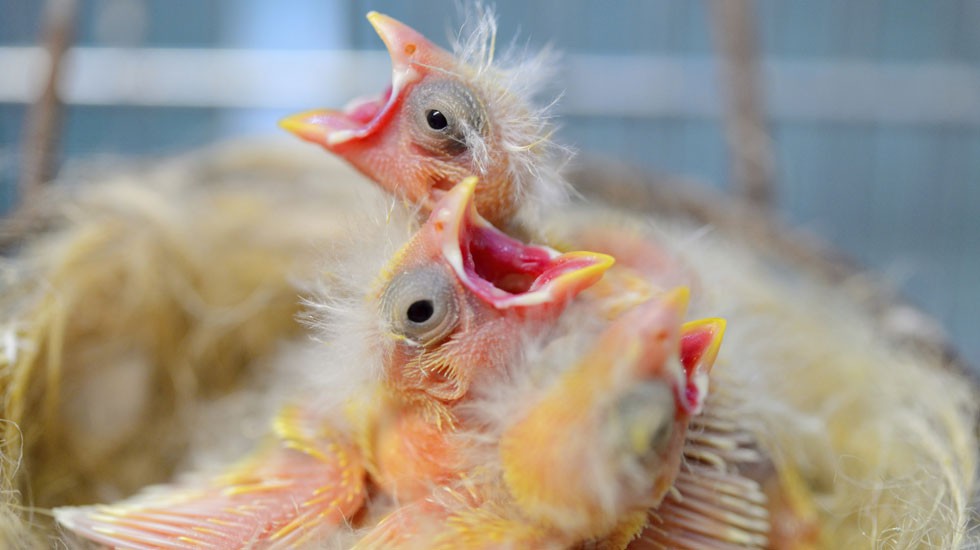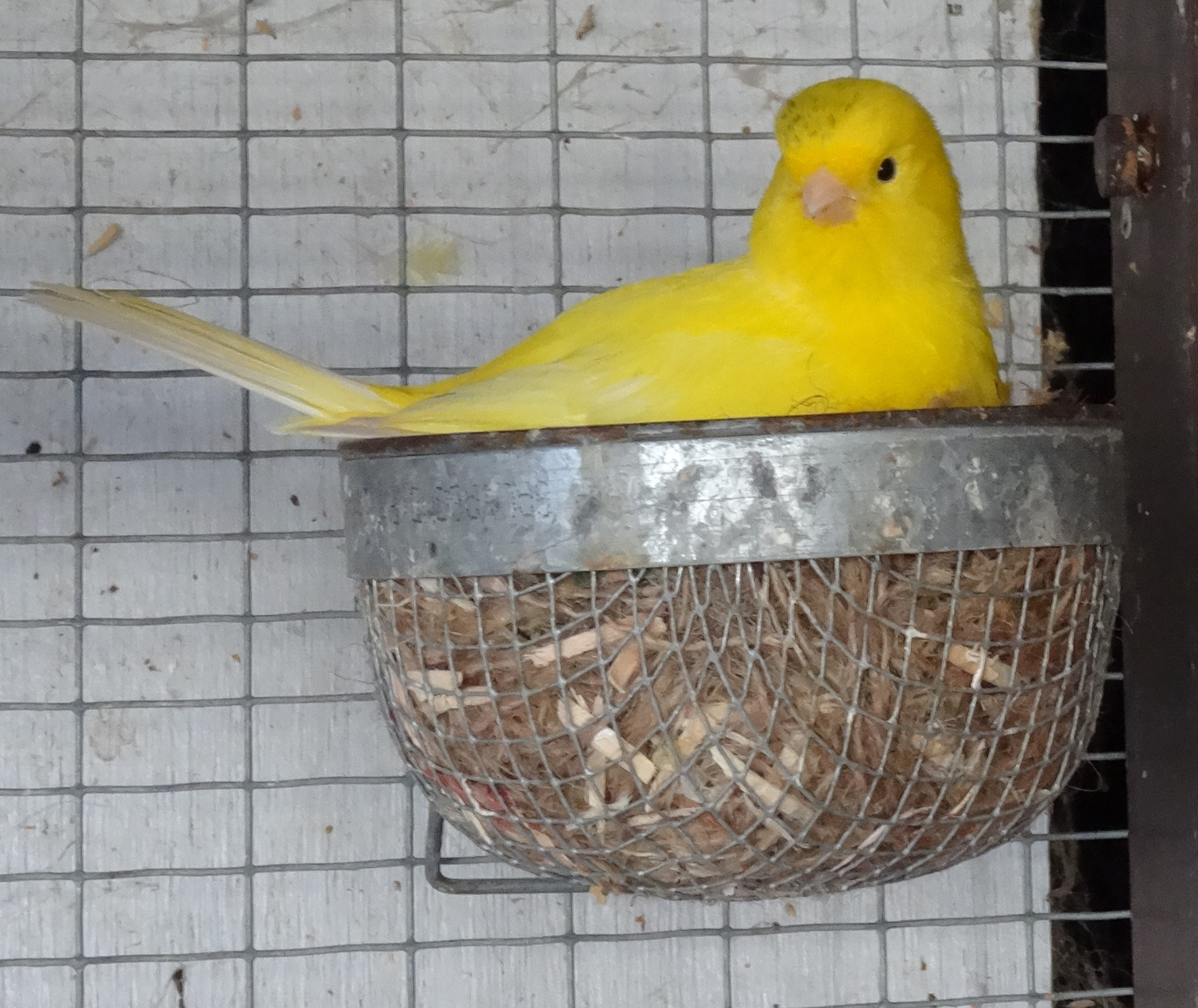
BREEDING
PREPARING AND BREEDING BORDER FANCY CANARIES
The most successful arrangement for canary breeding is to have a room specifically devoted to the birds. One that has its windows facing East is undoubtedly the best for:
1) Early morning sun; and
2) Cooler during the hot Summer months.
BIRDROOM
A room that is too warm makes the birds sluggish and more susceptible to ailments. It also has a tendency to adversely affect the moult. In a relatively cool room, the birds have more stamina, get through the moult quicker and better, produce better feathers and generally are in finer looking condition which means a great deal on the show bench.
The room should have plenty of ventilation, with a continuous supply of fresh air, but free from draughts. Border Fancy canaries can stand a low degree of temperature without ill effect, provided there are no draughts in the bird room. Before the beginning of the breeding season, it is advisable to have a thorough “Spring” clean of the entire bird room, cages, perches and all breeding equipment. All cages and surfaces should be thoroughly washed with a good disinfectant and if necessary, repainted.
As far as the general organisation of the bird room goes, it is foolish to breed with more birds than the breeder can give sufficient attention to. Various jobs can be divided into daily and weekly tasks. The daily procedures involve feeding and watering and bathing (once or twice a week) the birds. The weekly tasks involve the cleaning of the cages, water bottles and seed hoppers. It is often said that success is directly proportional to the care and attention the Border Fancy canaries receive.
STUD BOOK
Do not rely on your memory. It is most important to register each bird in a stud book and include all the relevant details on each bird, listing its good points plus any minor faults it has; its show successes; the bird’s pedigree; its previous breeding successes if it is an over year bird, including which bird(s) it had been previously mated to; the quality of the resultant youngsters; the show successes of those youngsters, etc. This information can be used to inform the breeder on how best to pair the bird in the forthcoming breeding season. The information is also important because, as the birds age, they can change. The information the breeder has in the stud book can be considered a “time capsule”.
DIET
The single most important factor in a good breeding season is correct feeding. A high quality seed diet forms the basis of any feeding regime. A good canary tonic seed mixture should also be fed. Border Fancy canaries should be given access to fresh greens right throughout the year, including the breeding season. As the breeding season approaches, the frequency of feeding a good quality soft food mixture increases. The feeding of soft food should be commenced about 8 weeks prior to the commencement of the breeding season. Initially, it can be introduced on a weekly basis and that frequency increased to daily just before pairing up. If the breeder is unsure as to what type of soft food mixture should be supplied to the birds, the advice of a more experienced breeder should be sought. Breeders at the Border Fancy Canary Cub of Victoria will gladly advise new members on this aspect of breeding season preparation.
Vitamins and minerals are essential at this time of the year. The breeder may choose to use a proprietary multi vitamin soluble complex in the drinking water. If this is the case, it is essential that the water is changed regularly (daily or every second day). The birds should also be given continuous access to calcium and shell grit.
BREEDING CONDITION
Both male and female Border Fancy canaries should be in top condition before pairing and should have been caged separately since the show season. The males will be in full song and the vent of the male should be protruding and slanting forward. The abdomen should be flat and slightly sunken from the breast bone. The abdomen of the hen should be rounded, with the vent enlarged. The hens will be restless and fly and “twitter” to the cock birds. Toe nails on both the males and females should be trimmed.
PAIRING
The ultimate aim for the breeder is to pair his/her birds so that they produce young as near to the Standard of Perfection as possible. The process of pairing stock can be complicated and an experienced eye, accompanied by information contained in the stud book, is required. Pairing of the birds should be done on paper as the show season comes to an end and any purchases and sales have been finalised. These pairings can be reviewed closer to the commencement of the breeding season and hopefully not changed. It is advisable for the beginner to seek an experienced breeder or member of the club to assist in pairing if unsure.
Introduce the male and female together when they are ready and wait and see if they are compatible. There may be some initial squabbling, but this should settle quickly. Do not introduce the nest straight away. Introduce some breeding material in a few days and wait and watch for the hen to take a large mouthful of material in her beak and stuff it right back in the beak and start looking for a place to nest, then introduce the nest. Common nesting materials include hessian for the outside of the nest and finely teased cotton wool to line the inside of the nest.
EGGS
Once the nest is completed, watch for the first egg, which should appear on average around the fourteen day mark. Remove each egg as it is laid and replace with a “dummy” egg. Four to five eggs comprise the average clutch, one being usually produced every day first thing in the morning. Store the eggs in a safe place until the last egg is laid. This is called the “blue” egg and is of a darker hue than its preceding eggs.
Before setting the hen, most breeders use a dusting powder to protect against lice and mite. Before replacing all the good eggs, check that the hen has constructed a good clean nest and that it is smooth inside the nest. if not, the nest can be tidied up through the use of an incandescent light bulb which can be used to smooth the inside of the nest.
CHICKS
On the fourteenth day, usually, the babies will hatch, but be vigilant to the appearance of broken egg shells on the floor of the breeding cage from the thirteenth day onwards. Make sure the pair has access to fresh soft food. Increase the soft food and greens as the youngsters grow.
On the sixth or seventh day, the breeder will be required to ring the youngsters. Once rung, do not interfere with the babies, save to check them visually to ensure that the pair is feeding well. By about the twenty first day, the hen may show signs of wanting to nest again. if so, introduce a new nest with access to plenty of nesting materials otherwise the parents may start to pluck the babies. Once the hen starts laying again, the cock bird will usually take over the role of feeding the youngsters and once the hen has laid her full clutch the cock bird and the youngsters should be removed and the cock bird will finish rearing the first round chicks. By the time the youngsters are twenty eight days old, they should be feeding themselves independently. The cock bird can be returned to the hen to assist in the rearing of the second clutch of chicks. It is important that the young birds find water once they are removed form the breeding cage. Hopefully the cock bird has taught the babies to find the water, but be vigilant in this matter. Where there is any doubt, have a small amount of water available for the babies to drink.
Good luck in the breeding season. Breeding Border Fancy canaries is a wonderful pastime.
 Border Fancy Canary Club of Victoria
Border Fancy Canary Club of Victoria
